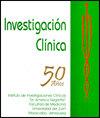唇腭裂患者术前使用矫形设备有效性的证据:系统回顾。
IF 0.1
4区 医学
Q4 MEDICINE, RESEARCH & EXPERIMENTAL
引用次数: 0
摘要
这篇综述文章旨在评估在唇腭裂患者中使用术前矫形矫治器(POP)的证据。搜索使用Medline/PubMed、Scholar Google、Clinical Trails、ProQuest、Scopus和Web of Science数据库进行。在搜索过程中,共发现7926条记录,其中分析了105篇全文文章,23项研究包括对在同一类型手术前使用POP的患者及其未使用POP的对照组的分析。POP在LPH治疗中最常用的器械是:被动腭(Hotz腭)、鼻唇塑形(NAM)、McNeil器械,最后是T牵引。评估的主要结果是:面部美学和鼻腔外观;评估头影测量、上呼吸道、鼻裂宽度,以及解剖学参考,如犬间和结节间距离。此外,还发现了评估咬合和发声的研究。这些文献中的证据表明,在面部美学和上颌段闭合裂隙的近似性方面,使用主动矫治器比被动矫治器有更好的效果。然而,研究的异质性、偏倚风险和低质量不允许得出确切的结论。本文章由计算机程序翻译,如有差异,请以英文原文为准。
Evidencia de la efectividad del uso de aparatología ortopédica prequirúrgica en pacientes con labio y paladar hendido: revisión sistemática.
This review article aimed to evaluate the evidence on the use of a presurgical orthopedic appliance (POP) in patients with cleft lip and palate. The search was conducted using Medline/PubMed, Scholar Google, Clinical Trails, ProQuest, Scopus, and Web of Science databases. During the search, 7,926 records were found, of which 105 full-text articles were analyzed, and 23 studies included analysis in patients with the use of POP, and their control groups without the use of POP prior to the same type of surgery. The devices most used for POP in the management of LPH were: the passive palate (Hotz palate), the nasolaveolar moulding (NAM), the McNeil device, and finally, the T-traction. The primary outcomes evaluated were: facial aesthetics and nasal appearance; the evaluation of cephalometric measurements, upper airways, nasal fissure width, as well as anatomical references such as inter-canine and inter-tuberosity distances. In addition, studies that evaluated occlusion and phonation were found. The evidence from this literature suggests that the use of active appliances had a better effect than passive appliances in terms of facial aesthetics and approximation of the maxillary seg-ments for the closure of the fissure. However, the heterogeneity, the risk of bias, and the low quality of the studies do not allow to state firm conclusions.
求助全文
通过发布文献求助,成功后即可免费获取论文全文。
去求助
来源期刊

Investigacion clinica
MEDICINE, RESEARCH & EXPERIMENTAL-
CiteScore
0.20
自引率
50.00%
发文量
2
审稿时长
>12 weeks
期刊介绍:
Estudios humanos, animales y de laboratorio relacionados con la investigación clínica y asuntos conexos.
 求助内容:
求助内容: 应助结果提醒方式:
应助结果提醒方式:


